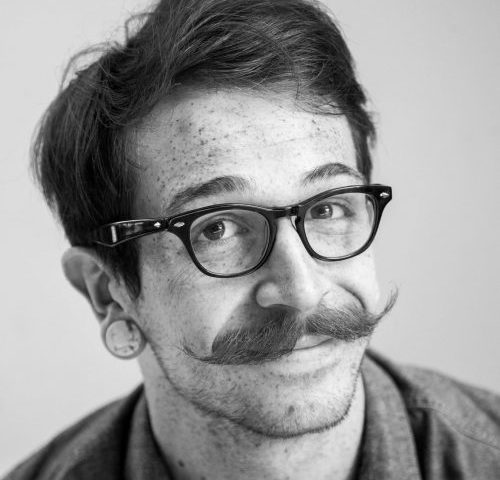Feeling for the Organism in the INCUBATOR Art Lab
Author: Anthony Gavin: interdisciplinary PhD Candidate in the Cultural, Social and Political Thought (CSPT) program at the University of Victoria
“‘Organism’ is for her a code word—not simply a plant or animal… but the name of a living form, of object-as-subject” (Evelyn Fox Keller, Feeling for the Organism 1983, 200).
To walk into the Incubator art lab at The University of Windsor is an experience quite unlike that of walking into your traditional laboratory facility. One enters either through sleek glass doors, or through the massive original gate to the old armoury building, which was recently renovated to house many of the art studios, classrooms, and multimedia galleries which comprise the School of Creative Arts. The Incubator lab is found on the first floor of the building. The hybrid art-science studio is a BSL-2 certified lab, meaning that it works with the same enhanced safety measures as other labs which handle potentially contaminating biological agents. The first thing you see behind its glass outter wall is a mannequin in a unicorn mask, properly attired in all of his personal protective equipment (PPE): lab coat, safety glasses, and latex gloves. “A bit of poetic licence, perhaps,” Fox Keller continues, in her intellectual biography of the maverick molecular biologist, Barbara McClintock, “but McClintock is not a poet; she is a scientist.”
A chandelier hangs from the ceiling over the table where students and research assistants gather to perform their experiments, under the direction of Dr. Jennifer Willet – professor, bioartist, and Canada Research Chair in Art, Science and Ecology. It was at Dr. Willet’s invitation that I found myself guest for a three-day workshop, during which time we prepared an array of gene-edited bio-media for an augmented reality screening of Adam Bolt’s documentary, Human Nature (2019), at the Windsor International Film Festival. When I first approach the lab, I am greeted by a gathering of students outside. The first to introduce himself is Philip Habashy, Research Coordinator and biological sciences graduate. Phil has corresponded with me previously, to ensure that I received the mandatory Occupational Health and Safety (OHS) training and secured access credentials ahead of time. “When he’s not here, Phil’s off curing cancer in his other lab,” Jennifer quips, as if to downplay the seriousness of bioartistry compared with “real” (i.e., socially valuable) science. In his off-time, you’ll also find Phil drawing, creating music, and dancing. The idea behind the glass wall is to make the lab itself into a kind of exhibition space. “His name is Hector,” Phil informs me, referring to the unicorn lab assistant. Two of Jennifer’s other Research Assistants, Domenica Mediati and Michael Lucenkiw, make adjustments to their art installations on the wall’s outer display. One is a television set playing a slideshow of experimental bio-materials, uploaded into digital media, and the other is a box hooked up to UV lights and motion detector sensors, which trip to trigger biophosphorescence and further mutative transformations in a sample plate of genetically modified E. coli. Behind us is a lobby, and down the hall, the theatre that will be screening Bolt’s documentary.
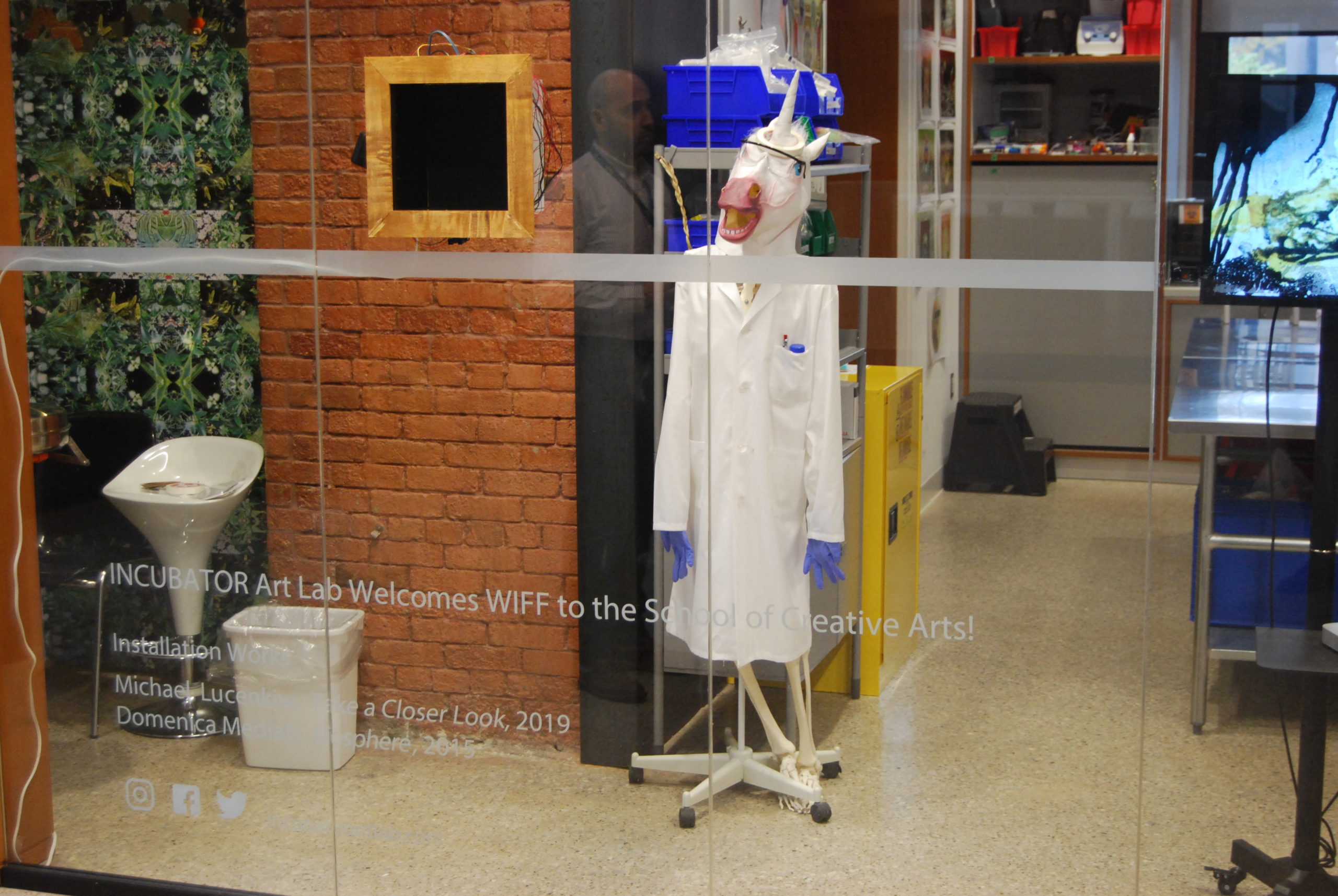
Photo by Anthony Gavin: INCUBATOR Art Lab Hector the Unicorn
Before taking our seats, we wash our hands and don our PPE. Since there are just six or eight of us in total, and I the only newcomer, the introductions among us are brief. It is not long before Phil begins walking us through the experiments that we will be conducting, piano music faintly audible in the background. My research investigates the connection between the body as author and biological code as something that is both written and lived. What of the organism elides the epistemologies of the life sciences, and how does this unsettle authorial intent in the marking of bodies with our gestures? How is human and nonhuman life written and rewritten, both inside and outside of traditional biotechnological and biomedical production sites? Normally my research involves scouring sources like Nature and Scientific American for news from the frontiers of biomedicine and molecular genetics, to form an ongoing sense of the evolving discourses of the life sciences in the rapidly advancing age of genetic engineering. Recent discoveries like CRISPR/Cas9 have made the sweeping popularization of genetic engineering biotechnologies a foregone conclusion. For about $100 USD, you, the reader, can purchase one of the two kits used in the experiments we conducted, from a website called The Odin. While the regulatory ecologies of globalized biomedicine wage litigious border wars over the patenting of intellectual property digitally extracted from human and nonhuman genomes, my research focuses on the disruptive potentials at the margins of normal biomedical and biotechnological production. This is how I got sucked into the Incubator lab. Bioartists and “grinders” (DIY biohackers, like those behind the website The Odin), are making advances in, against, and between the ecologies of industrialized biomedicine and biotechnology. These makers at the margins are riding the waves of a new power over evolution which humanity has never hitherto known, all made possible by the simple exploit of a bacteriological immunitary defense mechanism: CRISPR/Cas9 consists of a Cas9 protein, which protects certain bacteria from virological infection by copying the genetic information of known viruses and cutting sequences of foreign DNA entering the cell that match it, combined with a synthetic guide RNA, which tells it what to cut. Importantly, these materials can be cheaply produced, even in a relatively low-tech bio-lab. Through language, human beings have always condensed their natural surroundings with information, manipulated objects by encoding them in symbolic logics, incorporating them into economies, and creating worlds for themselves. The question is no longer whether, but how we ought to implement such technologies, for the transformation and betterment of human and nonhuman life on this planet.
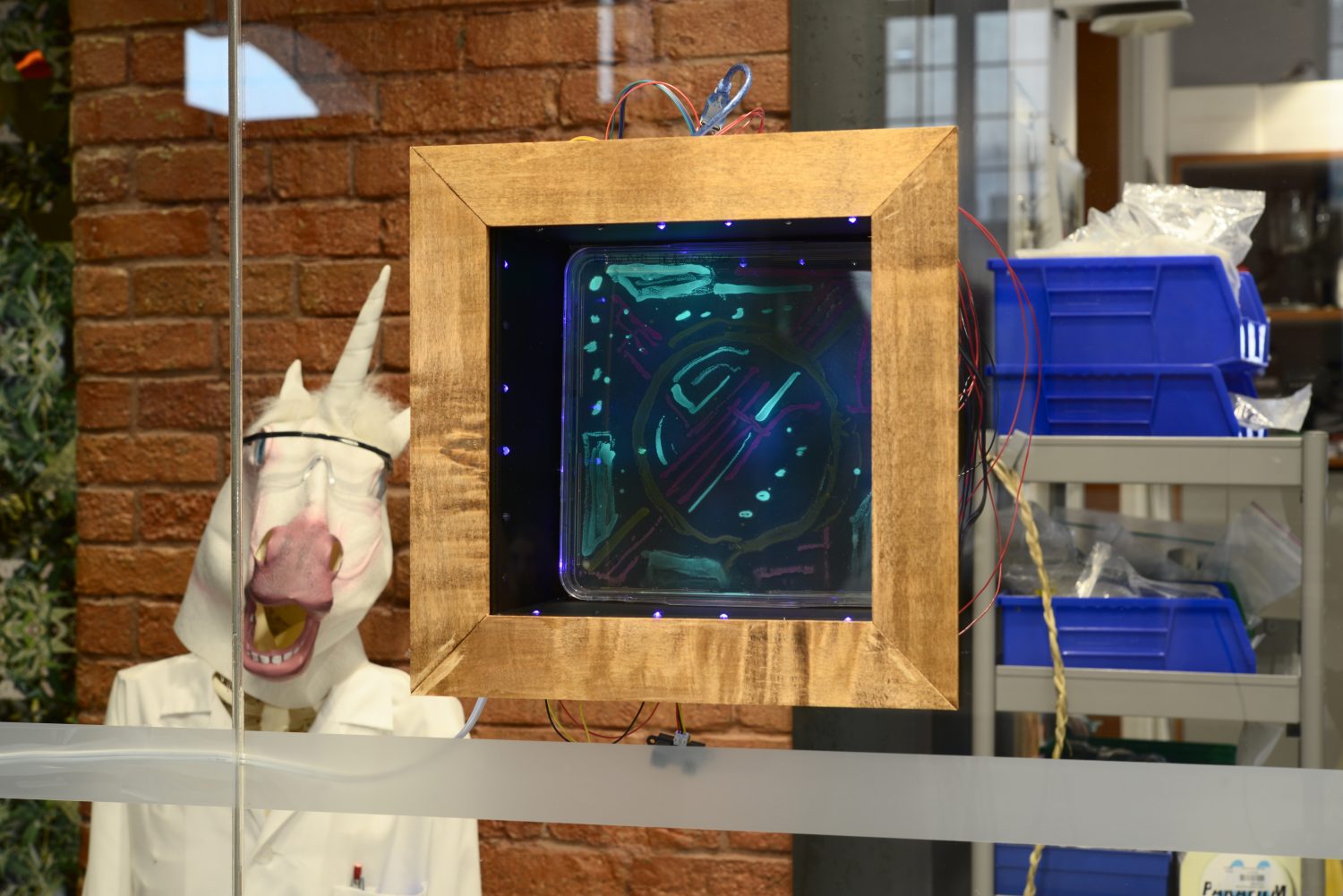
Photo by Shawn Chamberlain, Artwork by Michael Lucenkiw
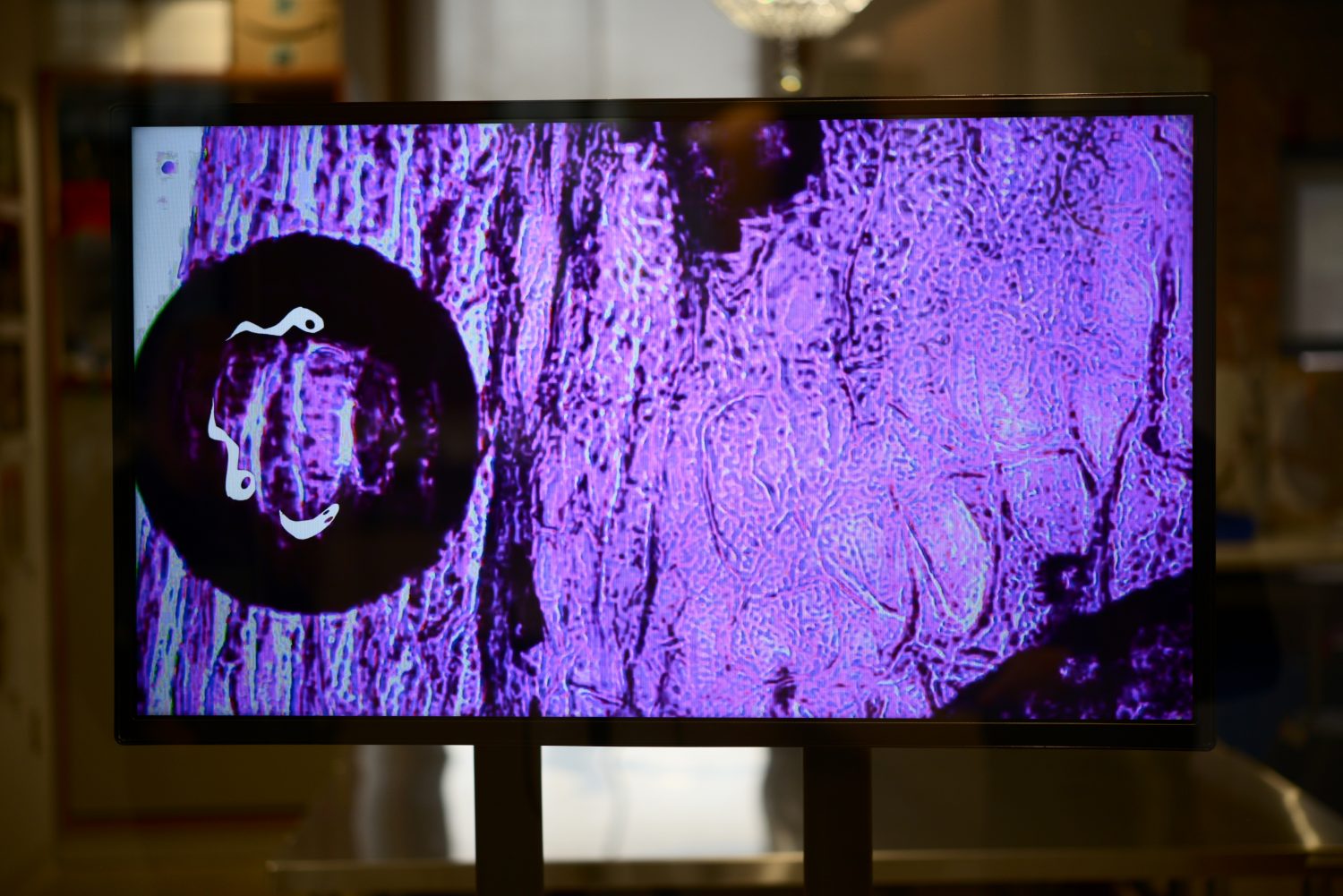
Photo by Shawn Chamberlain, Artwork by Domenica Mediati
Jennifer explains that regulatory ecologies aren’t so much laws, but limitations imposed on the public funding of research activities. Except in extreme cases where human rights are violated, research in genetic engineering takes place in an almost entirely market regulated environment, both inside and outside of university labs. As a result, independently wealthy entrepreneurs can elide much of the effective regulatory apparatus for biomedical and biotechnological experimentation. Self-experimentation has been the response of the DIY biohacker movement to public health laws prohibiting the administration and sale of biomedical products outside of a licenced facility, and bioartists have enacted their own creativity in navigating the naturally risk-averse complexity of regulatory ecologies. While the grinder movement is driven largely by a libertarian ethos of identifying regulatory zones of exception in which to maximize individual autonomy through market-driven gaps in access to health, the Incubator lab addresses deficiencies in public access to science and technology by inviting outsiders into a setting where the technology itself can be demystified and discussed. One openly disdains scientific expertise and risk management, while the other fosters ongoing dialogue between experts and impacted communities. The experiments we conducted were fairly straightforward, the lab manuals only about as complicated as the assembly guide for an average piece of IKEA furniture. After two days of experimenting and a 24-hour incubation period, I visit the lab the Friday night before the film screening to check in on my samples: two plates, one consisting of CRISPR-modified antibacterial resistant E. coli, the other of biophosphorescent yeast shocked to absorb DNA plasmids extracted from jellyfish. Michael lets me in. He’s pulling late hours in the lab, putting finishing touches on his installation for the next day’s exhibit: the motion sensor UV-box containing biophosphorescent bacteria. Unlike the TV set standing next to it, the wired connections behind the box are exposed. Michael explains that he likes to leave exposed wires visible in his displays, to demystify what’s going on behind the curtains. To demystify is to expose the illusion of magic—or, in certain tricks, of risk. Art-science collaboration can help bridge a trenchant gap between scientific consensus and public understanding of the risks and potential benefits involved in emerging biotechnologies. The thing about risk is that the concept is inherently lodged between a calculus of relative security and dangerous exposure. Something startling about being in the lab was experiencing firsthand the sheer volume of plastic wastes generated by even fairly rudimentary biological experiments. The plastic tips of our micropipettes (high-precision waterdroppers used in the transfer of bio-fluids between media) must be ejected and disposed of after each individual use. A key factor in the switch from glass to plastic vials in biology labs was the attempt to reduce the presence of contaminating agents, plus a drive toward efficiency: whereas single-use plastics are easily kept sterile on a laboratory shelf, glass instruments must be re-sanitized in order to be reused, which takes time that could be otherwise spent extracting data. Today, environmental exposure to the dangers of plastic wastes have been at the center of a call to go plastic free. Jennifer tells us that the National Health Institute in London has recently declared its intent to go plastic free, and that most other labs will likely follow suit in the next five to ten years.
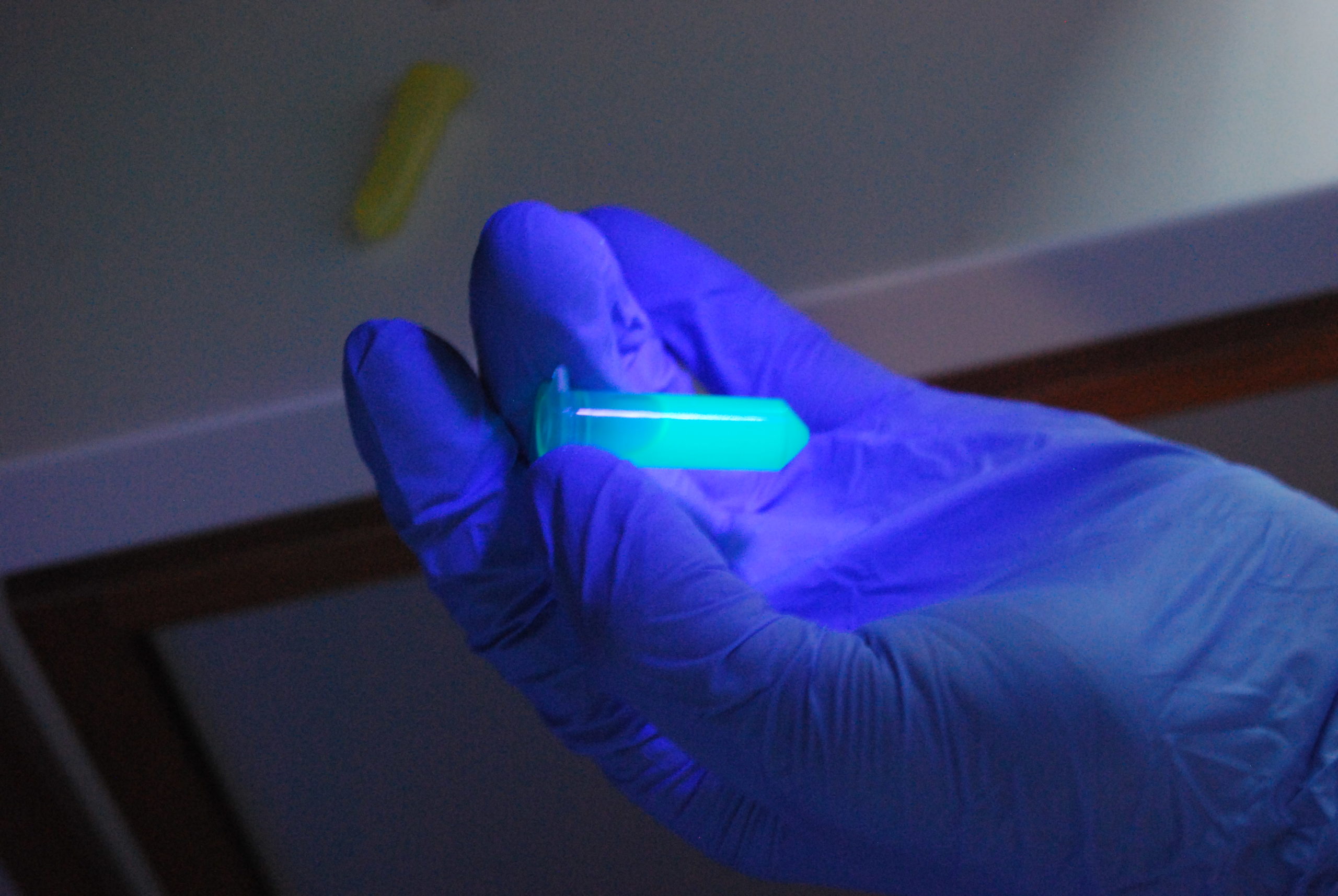
Photograph by Anthony Gavin: CRISPR Workshop
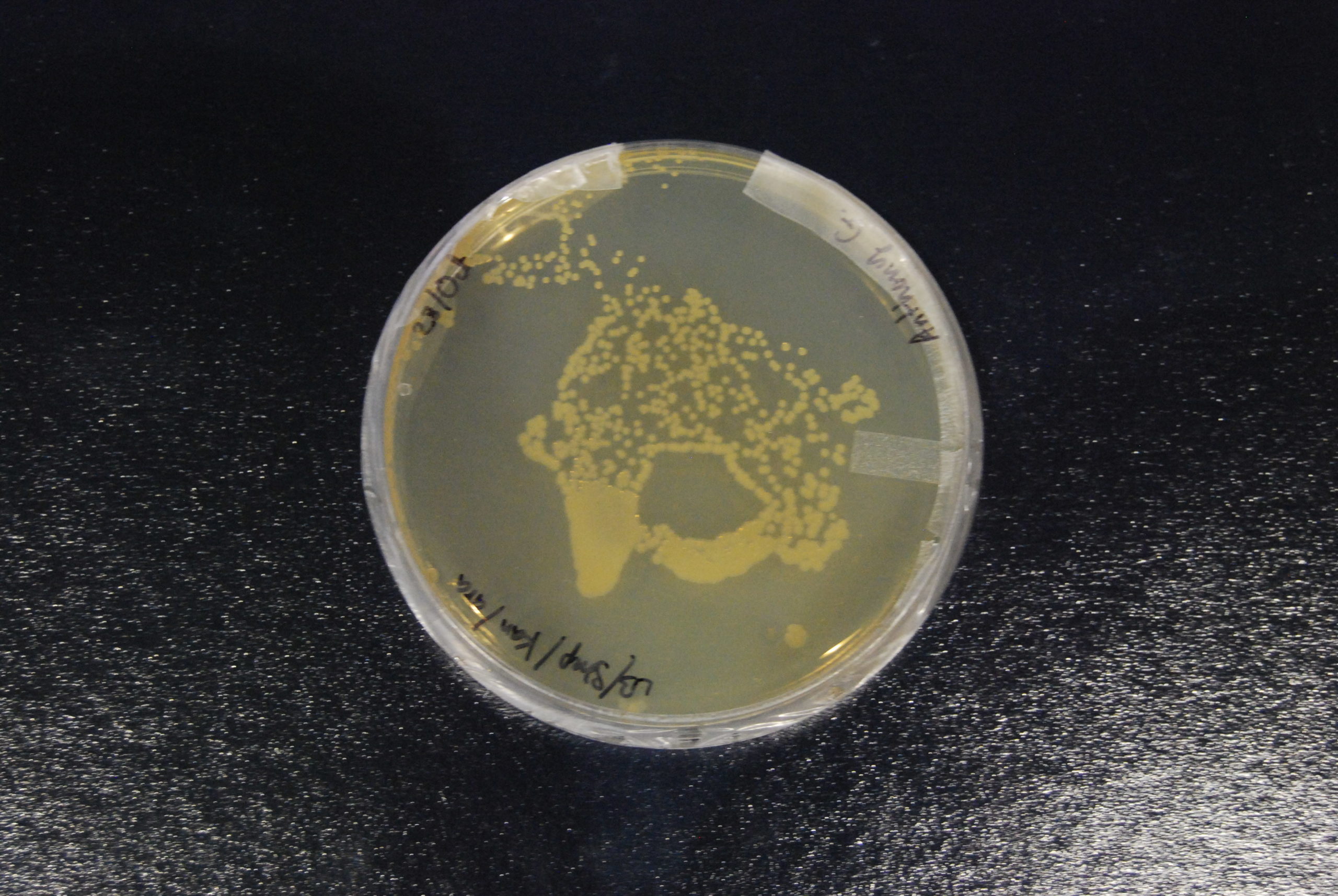
Photograph by Anthony Gavin: CRISPR Workshop
I glance at the mural being built on one of the lab’s innermost walls: a collage of indigenous plant species, which hold significance for the displaced Ojibway, Odawa, and Potawatomie natives of the land upon which the university is built. One of the most abundant sites of wildlife nearby, just down the river from the university, is a coastal area that doubles as a dumping ground. The area was called La Côte de Misère (Misery Coast) by French settlers at the end of the eighteenth century, who quickly over-tilled their narrow land partitions along the river and rendered its sandy soils infertile. Traci Brynne Voyles calls the colonial practice of rendering “an environment and the bodies that inhabit it pollutable,” wastelanding. Down Misery Coast, one also finds the future site of the Gordie Howe International Bridge, anticipated to be one of the major border crossings for international trade between Canada and the US. The lump sums of cash and lands transferred to see the bridge project through themselves have a colonial legacy, dating back to the 1783 transfer of the former reserve lands of modern-day Detroit (established by British colonists) from Quebec to the US, which depended on the 1778 Sullivan Expedition to break the back of the Haudenosaunee Confederacy (who were British allies), in order to win the American Revolutionary War. A 1797 British land purchase on Treaty 2 territory established the town of Sandwich on the Canadian side of the river. The wastelanding of traditional territories and local First Nations’ histories are virtually repeated by colonial erasures on the first mural you see as you walk down Sandwich Street from the riverside. “The Founding of Sandwich” seamlessly divides the area’s history into a 1540-1775 “French period”—built on Jesuit missions, liquor and the fur trade—and a British period dating from 1797 onward. The mural’s narrative mapping typifies what Eve Tuck and Wayne Yang would call a “settler move to innocence” in the town’s founding story. Indigenous bodies are on display merely as part of the scenery, their willing consent to colonization implied. Such settler colonial erasures were further perpetuated by the 1876 Indian Act, which aimed to assimilate First Nations, and allowed the Canadian government to control almost all aspects of aboriginal life. In the 1876 version of the act, Indian status was determined by a gendered law of patrilineal descent. In 1985, the Indian Act was amended, so that blood quantum became definitive of Indian status. In the age of molecular bioscience, state control over Indian status passes from abstract laws of kinship to statistical measurements of genetic inheritance. Kim TallBear explains how, in the mythical notion of “Native American DNA… older race concepts and practices were co-constitutive with genome science.’ Colonization with the tools of molecular bioscience means that life is exposed to new threats from within, that bodies and lands beyond the lab are the most riskily exposed to its outputs, to incorporation as wastes. Ruminating on the afterlives of hazardous wastes as pollutants, Jennifer steers our reflection toward the suffering of biowastes, cellular life used up and disposed of in biological experiments. What capacity do nonhuman organisms like bacteria have for suffering? Does a sample of Streptococcus pyogenes produced solely for the extraction of Cas9 protein scream a thousand proverbial screams when it is scraped off the plate and into the waste-bin? Donna Haraway suggests “conjugating” our experience of laboratory wastes to decenter the presumptive privilege of technoscientific perspective and human risk management, with the aim of “recrafting one’s accountabilities” toward nonhuman life. Rethinking the nonhuman’s capacity for suffering forces us to reframe responsibility for the effects of biological experiments, both inside and outside of the lab. Precisely what is at stake in the quantification of Indian status is the perceived governmental prerogative to differentiate between human and nonhuman capacities for suffering, to selectively distribute access to the full protection of human rights guaranteed by citizenship.
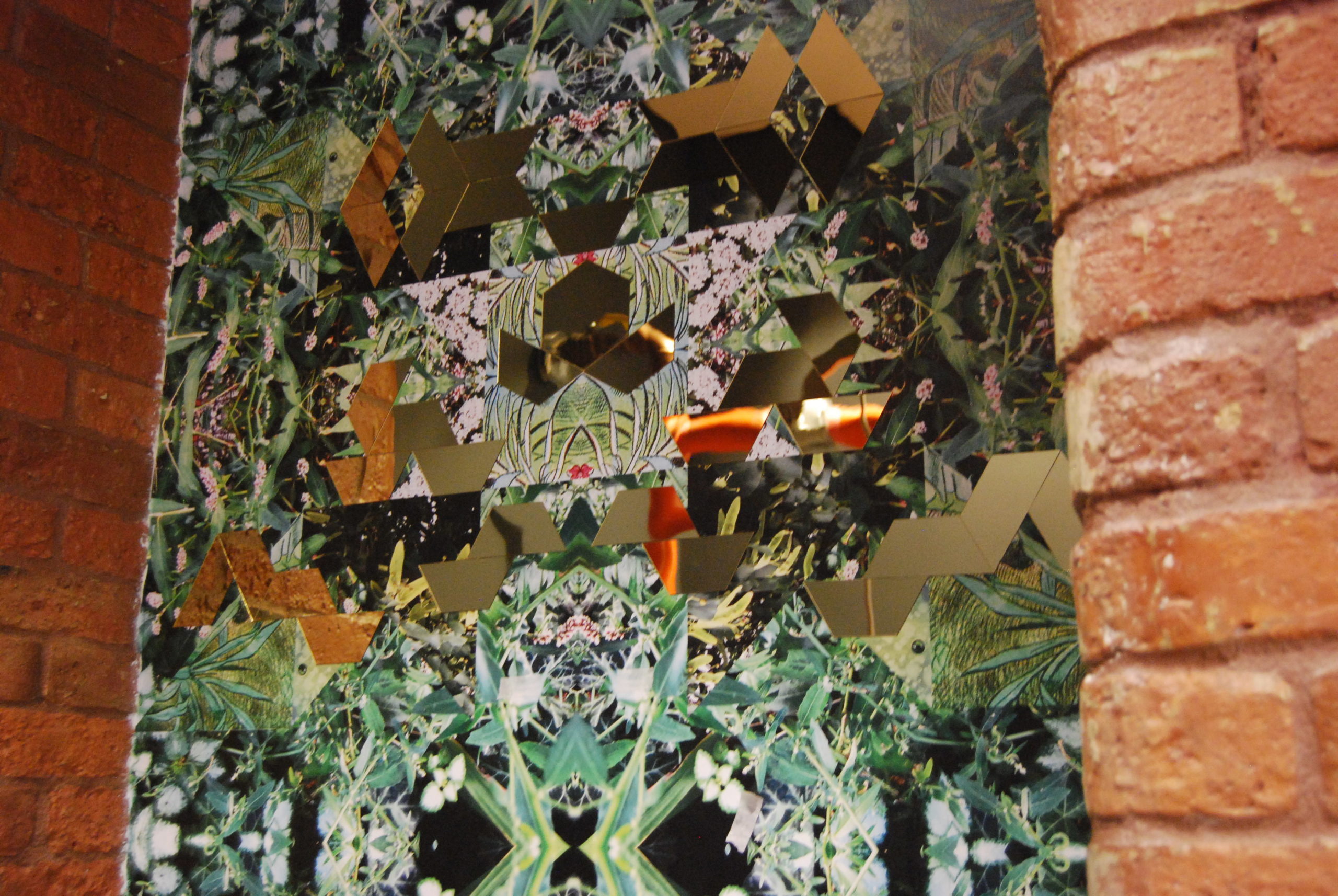
Photo by Anthony Gavin: Alcove
Our accommodations are at the cheapest Airbnb available—in the middle of “Ford City,” former heart of the Canadian auto industry, where nearly 20,000 workers went on strike for ninety-nine days in 1945 to demand union recognition. Bolt’s documentary, Human Nature, features a scene with footage from the floor of an old Ford factory, to draw a connection between early assembly-line production and humanity’s nascent technical capacity to engineer human and nonhuman life. One lively topic of discussion in the lobby outside of the exhibit after the film lets out is the capacity to genetically engineer human life. Not mentioned in the film (which was shot before it) was He Jiankui’s controversial experiment, in which two germline-edited human embryos were brought to term. The twin girls, Lulu and Nana, were revealed in November 2018 to be the first known human beings whose genetically altered traits will be inheritable by future generations. The specter of the practice of feminine infanticide in China (which is now officially outlawed) looms over an experiment which, directly or indirectly, designated the lives of two newborn girls as a biological experiment. The symbolism of the science lab in the old army building conjures the imagery of a bygone era of cooperation between state and scientific institutions, in the form of the twentieth-century military-industrial complex. Today, a particularly brutal form of free market capitalism dominates the commanding heights of the knowledge economy, including the industrialized biomedicine and biotech sectors. In this context, the revolution in genetic engineering is more likely to aggravate, rather than help solve, existing class, gender, and race inequalities. Unequal distribution of access to genetic biomedicine could even serve as a political and economic basis by which to translate perceived race, gender, and class differences into biological realities. By cultivating a practice of listening to life wasted by biomedical experimentation and biotechnological production, Haraway moves away from the human-centered ethical notion of ‘responsibility’, and toward what she calls, “response-ability.” Response-ability aims to craft new capacities for responsiveness, new notions of empiricism, and new accountabilities toward human and nonhuman life. Art-science activism is a key way of overturning the domination hierarchies of the old institutional alliances, of building bridges between biological technoscience and the communities impacted by it.
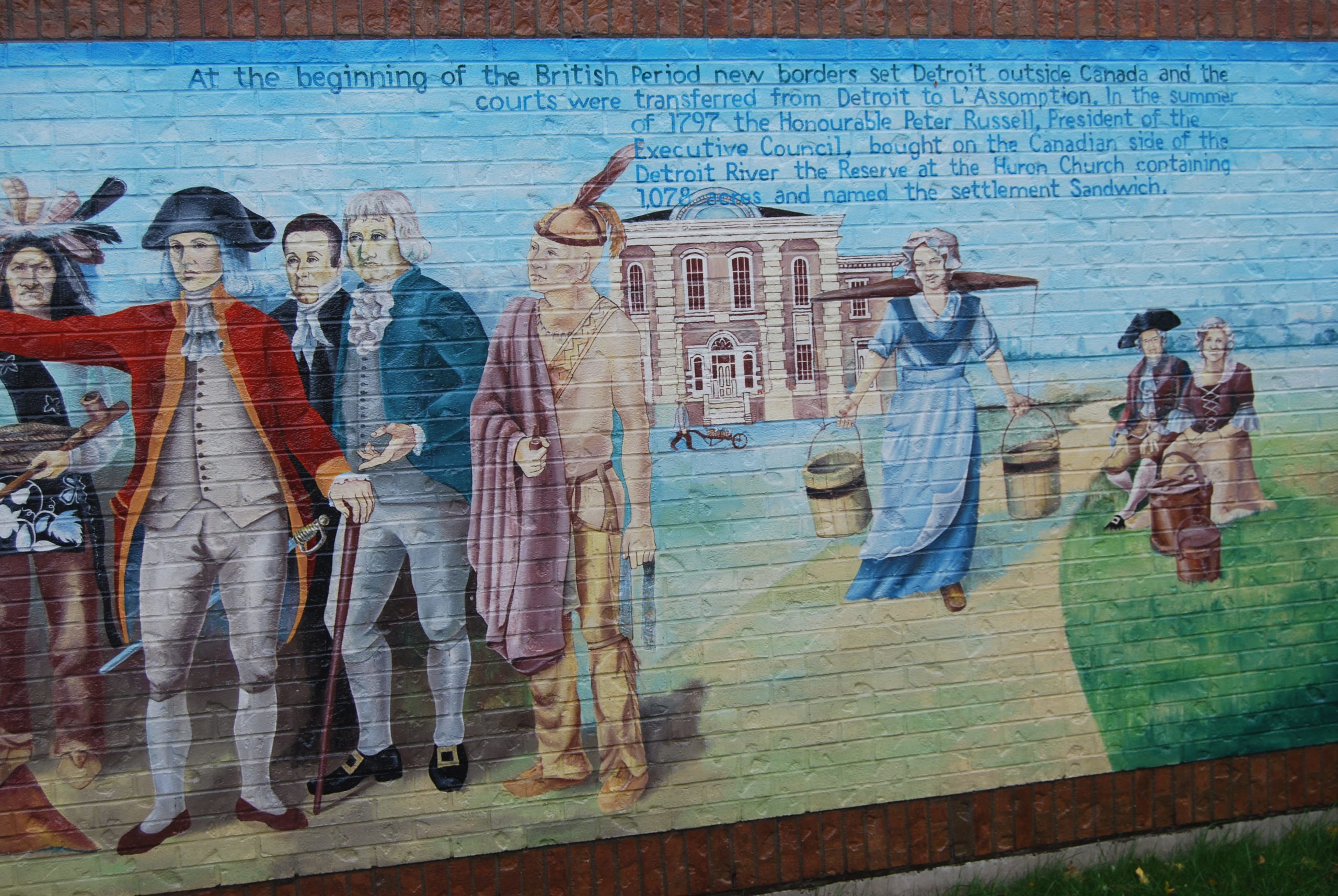
Photo by Anthony Gavin: Sandwich Town Mural
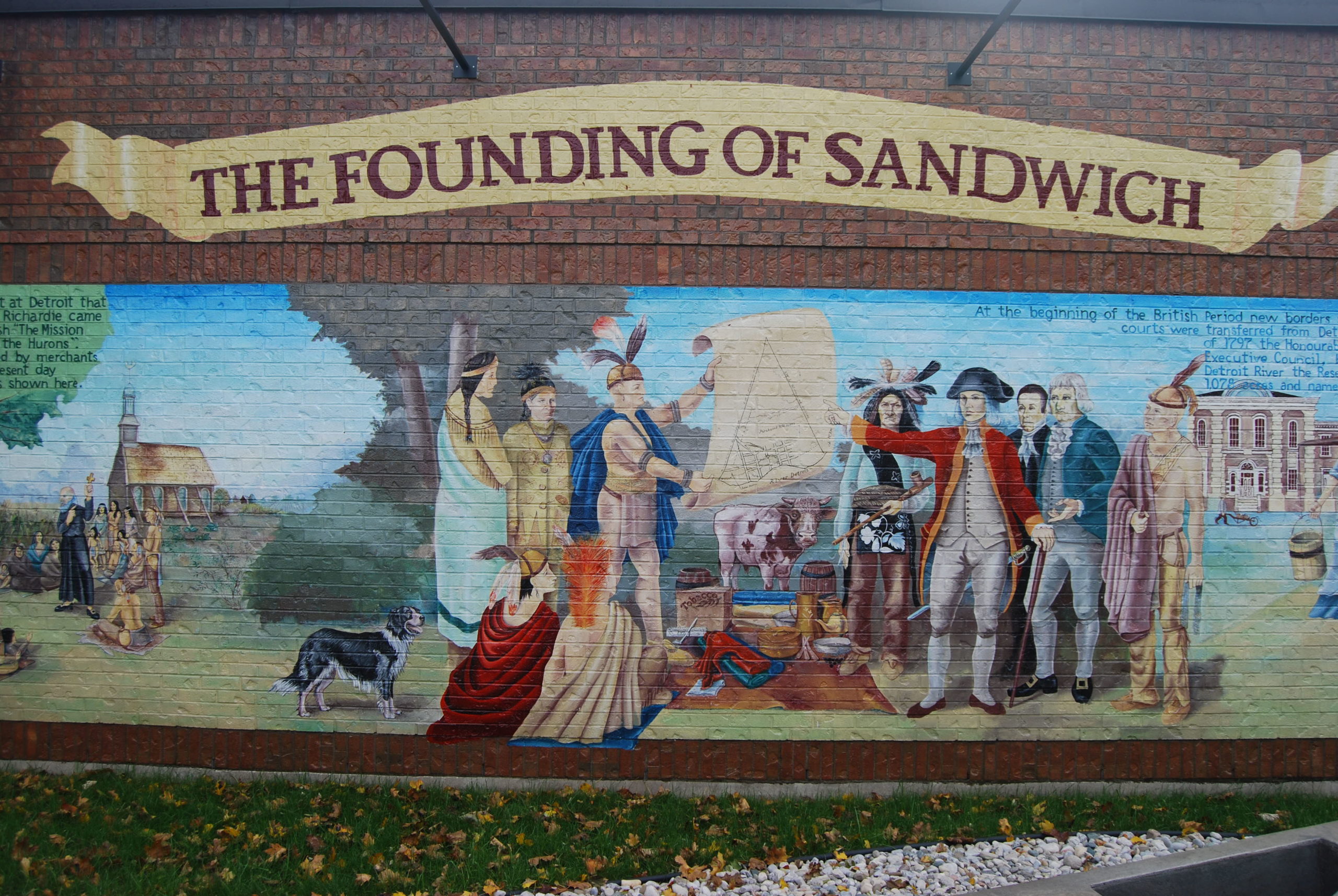
Photo by Anthony Gavin: Sandwich Town Mural
The epigram at the top of this post is from a book that Jennifer recommended to me during my stay. She suggests that cultivating “a feeling for the organism” is a good way of thinking about entangled art-science practices. Feeling for the organism in the bio-lab means treating nonhuman life with dignity, thinking of bio-materials as collaborators, rather than just items; subjects, rather than objects. Sometimes resequencing the genetic code of bacteria to create different colour combinations yields unexpected variants, which bioartists must then incorporate into their palettes. This nonhuman agency, which permanently elides our (human) capacity to perfectly predict what might happen (and what could go wrong) in any given experiment, doesn’t neatly fit within the confines of the natural philosophy of the life sciences, or within the governmental prerogative to mitigate risk. Before the screening, Jennifer discusses her hopes for the event. She’d like to the able to take our gene-edited bacterial samples ‘to the movies’, in double-layered containment plates worn as necklaces. Perhaps unsurprisingly, the OHS officer shoots the idea down. After the workshop is wrapped up, Jennifer and I meet for coffee. She reveals her occasional tactic of “performing the artist’s naïveté,” both with her students and with regulators, as a way of navigating systemic complexity and encouraging re-enchantment of the world. Performing the artist’s naïveté is a way of re-opening senses of possibility previously closed by everyday experience, and by the standard notions of empiricism of the life sciences. Treating bio-materials as art-science collaborators, to Jennifer, means feeling love for the organism. Love for the organism exposes the limits of language—reading, writing, and editing metaphors—applied to life processes which necessarily elide them. Love lets the other be other, and lets others speak for themselves. Further, it impinges upon human collaborators to open our ears to develop loving feelings for the organism, to cultivate new affects that activate an enduring sense of response-ability toward human and nonhuman agencies. This includes wastes, and other lives deemed less-than-(fully)-human: subhuman and dehumanized others, who are outsiders within the expanding scope of bioscientific practices in the age of molecular genetics. “Both literally and figuratively,” writes Fox Keller, McClintock’s “‘feeling for the organism’ has extended her vision. At the same time, it has sustained her through a lifetime of lonely endeavor, unrelieved by the solace of human intimacy or even by the embrace of her profession.” But re-opening the closures of the scientific profession need not imply a life of solitude. Anthropocentrism can be eschewed with a commitment to collective flourishing, by decentering the presumptive privilege of human and technoscientific perspectives. The intimacy sustained by love for the organism organizes nonhuman others into fruitful art-science collaborators; this art-science practice is not “human” per se, but humanizing.

